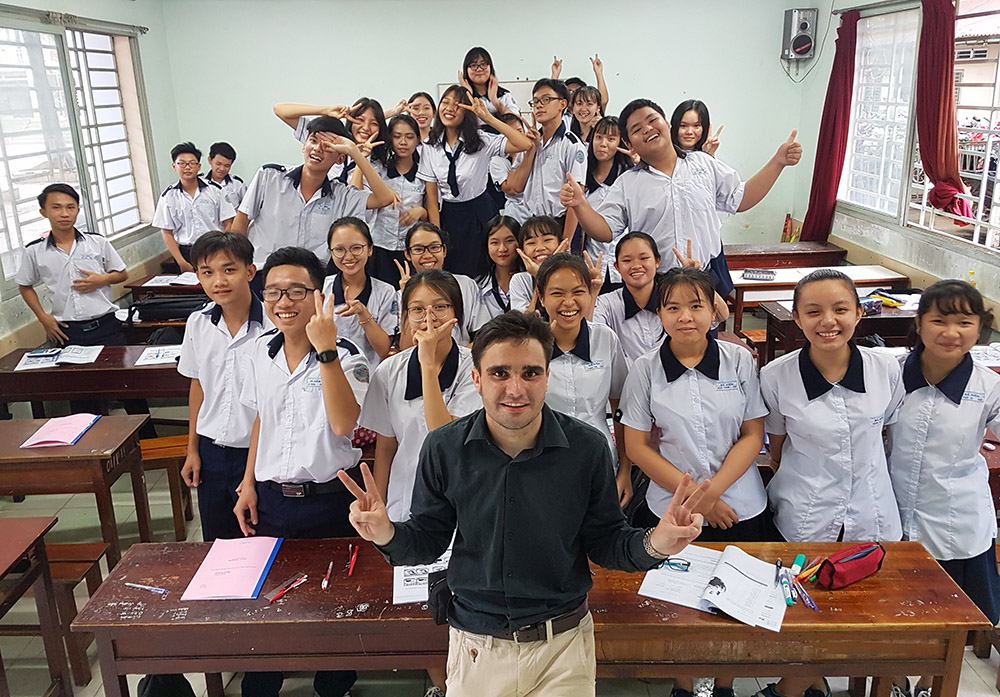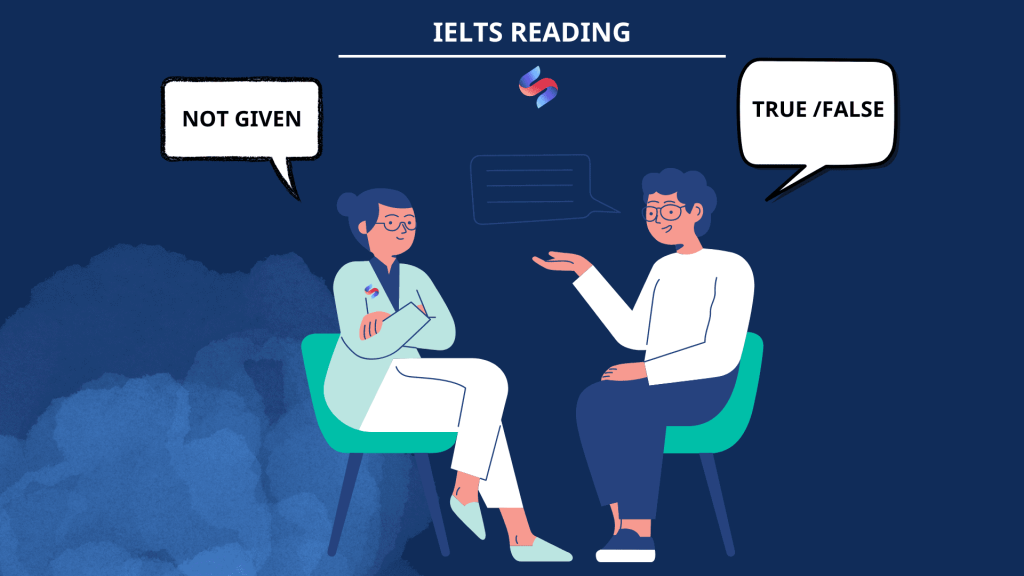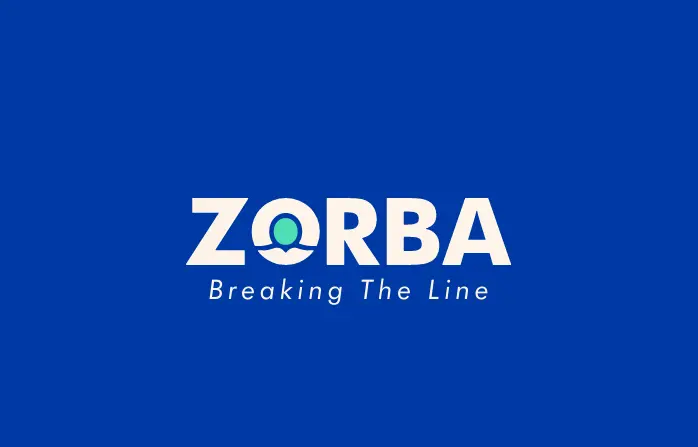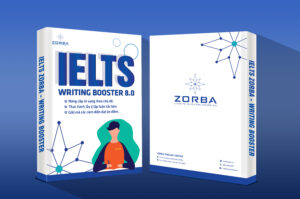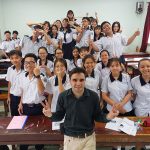
Nâng cấp từ vựng – IELTS Vocab Booster 2 – Test 3- READING PASSAGE 1
READING PASSAGE 2
POPULATION MOVEMENTS AND GENETICS
A Study of the origins and distribution of human populations used to be based on archaeological and fossil evidence. A number of techniques developed since the 1950s, however, have placed the study of these subjects on a sounder and more objective footing. The best information on early population movements is now being obtained from the ‘archaeology of the living body’, the clues to be found in genetic material.
B Recent work on the problem of when people first entered the Americas is an example of the value of these new techniques. North-east Asia and Siberia have long been accepted as the launching ground for the first human colonisers of the New World’. But was there one major wave of migration across the Bering Strait into the Americas, or several? And when did this event, or events, take place? In recent years, new clues have come from research into genetics, including the distribution of genetic markers in modern Native Americans .
C An important project, led by the biological anthropologist Robert Williams, focused on the variants (called Gm allotypes) of one particular protein – immunoglobin G – found in the fluid portion of human blood. All proteins ‘drift’, or produce variants, over the generations, and members of an interbreeding human population will share a set of such variants. Thus, by comparing the Gm allotypes of two different populations (e.g. two Indian tribes), one can establish their genetic ‘distance’, which itself can be calibrated to give an indication of the length of time since these populations last interbred.
D Williams and his colleagues sampled the blood of over 5,000 American Indians in western North America during a twenty- year period. They found that their Gm allotypes could be divided into two groups, one of which also corresponded to the genetic typing of Central and South American Indians. Other tests showed that the Inuit (or Eskimo) and Aleut formed a third group. From this evidence it was deduced that there had been three major waves of migration across the Bering Strait. The first, Paleo-lndian, wave more than 15,000 years ago was ancestral to all Central and South American Indians. The second wave, about 14,000-12,000 years ago, brought Na-Dene hunters, ancestors of the Navajo and Apache (who only migrated south from Canada about 600 or 700 years ago). The third wave, perhaps 10,000 or 9,000 years ago, saw the migration from North-east Asia of groups ancestral to the modern Eskimo and Aleut.
E How far does other research support these conclusions? Geneticist Douglas Wallace has studied mitochondrial DNA in blood samples from three widely separated Native American groups: Pima- Papago Indians in Arizona, Maya Indians on the Yucatán peninsula, Mexico, and Ticuna Indians in the Upper Amazon region of Brazil. As would have been predicted by Robert Williams’s work, all three groups appear to be descended from the same ancestral (Paleo-lndian) population.
F There are two other kinds of research that have thrown some light on the origins of the Native American population; they involve the study of teeth and of languages. The biological anthropologist Christy Turner is an expert in the analysis of changing physical characteristics in human teeth. He argues that tooth crowns and roots have a high genetic component, minimally affected by environmental and other factors. Studies carried out by Turner of many thousands of New and Old World specimens, both ancient and modern, suggest that the majority of prehistoric Americans are linked to Northern Asian populations by crown and root traits such as incisor shoveling (a scooping out on one or both surfaces of the tooth), single-rooted upper first premolars and triple-rooted lower first molars.
According to Turner, this ties in with the idea of a single Paleo-lndian migration out of North Asia, which he sets at before 14,000 years ago by calibrating rates of dental micro-evolution. Tooth analyses also suggest that there were two later migrations of Na-Denes and Eskimo- Aleut.
G The linguist Joseph Greenberg has, since the 1950s, argued that all Native American languages belong to a single ‘Amerind’ family, except for Na-Dene and Eskimo-Aleut – a view that gives credence to the idea of three main migrations. Greenberg is in a minority among fellow linguists, most of whom favour the notion of a great many waves of migration to account for the more than 1,000 languages spoken at one time by American Indians. But there is no doubt that the new genetic and dental evidence provides strong backing for Greenberg’s view. Dates given for the migrations should nevertheless be treated with caution, except where supported by hard archaeological evidence.
- Giải thích từ vựng
- Dental (a) /ˈden.təl/ (thuộc) răng
Eg: Have you made an appointment for your next dental check-up?
Pregnant women don’t have to pay dental charges under the current health system.
- Linguistic (a) /lɪŋˈɡwɪs.tɪk/ (thuộc) ngôn ngữ, (thuộc) ngôn ngữ học
Eg: I’m particularly interested in the linguistic development of young children.
Research into semantic skills focuses less on the qualitative aspects of
- Migration (n) /maɪˈɡreɪ.ʃən/ sự di cư
Eg: Christmas Island is known for its annual migration of 50 million bright red land crabs from the forest to the sea.
There was a mass migration of poverty-stricken farmers into the cities.
- Long-standing (a) có từ lâu đời
Eg: It’s been our long-standing policy not to allow pets at the hotel.
- Conflicting (a) /kənˈflɪk.tɪŋ/ đối lập, mâu thuẫn
Eg: We all work hard to handle the conflicting interests of a career and a family.
The jury heard conflicting evidence from three different witnesses.
- Origin (n) /ˈɒr.ɪ.dʒɪn/ nguồn gốc, căn nguyên/ dòng dõi
Eg: He is of North African origin.
What is your country of origin?
- Distribution (n) /ˌdɪs.trɪˈbjuː.ʃən/ sự phân bổ, sự phân phối
Eg: They aimed to achieve a more equitable distribution of resources.
Has the Channel Tunnel improved the distribution of goods between the British Isles and mainland Europe?
- Base on (phrasal verb ) dựa trên, dựa vào
Eg: The film is based on a short story by Thomas Mann.
Her latest project is a film based on the life of a 19th-century music hall star.
The movie is based on the true story of a London gangster.
- Fossil (n) /ˈfɒs.əl/ hoá đá, hoá thạch
Eg: Chitinozoans and a few graptolites were found in the unit, but no other fossils.
- Sound (a) /saʊnd/ đúng đắn, có cơ sở, vững; lôgic, hợp lý
Eg: She gave me some very sound advice.
The book is very sound on the basics.
- Objective (a) /əbˈdʒek.tɪv/ khách quan
Eg: I can’t really be objective when I’m judging my daughter’s work.
One of the biggest problems in a celebrity case is being able to select jurors Collocation
- be objective about sth
- objective criteria/evidence/opinion
- Archaeology (n) /ˌɑː.kiˈɒl.ə.dʒi/ khảo cổ học
Eg: Daniel is very interested in history and archaeology, and often visits historic sites.
She is an expert on the archaeology of ancient Egypt.
Archaeological (a)
- Genetic (a) /dʒəˈnet.ɪk/ thuộc di truyền học, thuộc gen
Eg: Cystic fibrosis is caused by a genetic defect.
There are tests which can establish a baby’s genetic endowment.
- Clue (n) /kluː/ đầu mối; manh mối
Eg: Police are still looking for clues in their search for the missing girl.
I’m never going to guess the answer if you don’t give me a clue.
- Take place: xảy ra, diễn ra
Eg: The story takes place in the 18th century.
- Fluid (n) /ˈfluː.ɪd/ chất lỏng
Eg: The patient was severely dehydrated and needed fluids urgently.
Your stomach produces a large quantity of gastric fluid.
- Variant (n) /ˈveə.ri.ənt/ biến thế
Eg: Scientists are seeing a growing list of genes in which genetic variants contribute to multiple diseases,
- Interbreeding (n) /ˌɪn.təˈbriː.dɪŋ/ (động vật học) giao phối, lai giống (với các giống khác)
Eg: Neanderthals simply disappeared through interbreeding with the modern newcomers.
The main threat to the species is interbreeding with rainbow trout.
- Calibrate (v) /ˈkæl.ɪ.breɪt/ định cỡ, xác định đường kính, kiểm tra kích cỡ
Eg: Our radar was calibrated for 100,000 yards.
Each response was calibrated using a five-point scale.
- Indication (n) /ˌɪn.dɪˈkeɪ.ʃən/ sự biểu thị, sự biểu lộ; dấu hiệu
Eg: There are few indications the economy is on an upswing.
Helen’s face gave no indication of what she was thinking.
Collocation
- an indication that There are few indications that the economy is on an upswing.
- an indication of sth The fact that she is being kept in a leadership role is an indication of how important she is to the company.
- a fair/good indication The price of a product is generally a fair indication of its quality.
- Sample (v) /ˈsɑːm.pəl/ lấy mẫu, đưa mẫu
Eg: Buma sampled opinions from people in both countries.
- Correspond (v) /ˌkɒr.ɪˈspɒnd/ xứng, tương ứng, phù hợp; đúng với/ tương đương với
Eg: The money I’ve saved corresponds roughly to the amount I need for my plane ticket.
The dip in their sales in-store directly corresponds to the increase in sales online.
Collocation
- closely/directly correspond to/with sth
- Deduce (v) /dɪˈdʒuːs/ suy ra, luận ra, suy luận, suy diễn
Eg: We cannot deduce very much from these figures.
- Ancestral (a) /ænˈses.trəl/ (thuộc) ông bà, (thuộc) tổ tiên/ do ông bà truyền lại, do tổ tiên truyền lại
Eg: Her musical gifts are a kind of ancestral heritage passed to her from her grandmother.
They had long planned to visit the family’s ancestral homeland in the Philippines.
- Descend from: bắt nguồn từ, xuất thân từ/ truyền từ (đời này sang đời)
Eg: All living creatures are thought to descend from an organism that came into being three billion years ago.
Her father is descended from Greek royalty.
- Throw light on: cung cấp một số thông tin, chi tiết, lời giải thích về điều gì
Eg: As an economist, he was able to throw some light on the problem.
- Physical (a) /ˈfɪz.ɪ.kəl/ thuộc thể chất, thể lý
Eg: We are concerned with the physical and psychological well-being of our employees.
He hates physical contact of any sort – he doesn’t even like to shake your hand.
- Minimally (adv) /ˈmɪn.ɪ.məl.i/ một cách tối thiểu, nhỏ, ít
Eg: She recommended minimally invasive surgery.
The area has changed only minimally over time.
- Credence (n) /ˈkriː.dəns/ niềm tin; lòng tin; tín ngưỡng
Eg: I’m not prepared to give credence to anonymous complaints.
- Minority (n) /maɪˈnɒr.ə.ti/ phần ít; thiểu số
Eg: It’s only a tiny minority of people who are causing the problem.
Because the two main parties have won almost the same number of votes, the minority group holds the key to the result.
- Specimen (n) /ˈspes.ə.mɪn/ mẫu, vật mẫu, mẫu để xét nghiệm
Eg: He has a collection of rare insect specimens.
- Luyện tập
Bài 1: Chọn từ trong khung để hoàn thành các câu bên dưới
| linguistic | conflicting | origin | based on | fossils |
| long-standing | distribution | dental | sound | objective |
- Many students enter schools with a ……………………………… repertoire that straddles their languages.
- I had some very expensive ………………………………… treatment recently – but it’ll save me problems in the future.
- We could reduce our costs by developing a more efficient ………………………………… network.
- Her unhappy childhood was the ……………………………….. of her problems later in life.
- His time at business school developed his ability to reconcile ………………………………. data and differing points of view.
- The country’s …………………………………………. relationship with the US was finally under strain.
- Analysts produced ………………………………………. evidence that the world was heading for a global recession.
- The conditions leading to preservation of these …………………………………….. are undoubtedly rare but not entirely unique.
- How ……………………………………….. is her knowledge of the subject?
- Her books are often …………………………………….. folklore and fairy-tales.
Bài 2: Chọn đáp án đúng để điền vào chỗ trống
- I’m giving a seminar on the latest developments in …………………… research next week. A. genetic B. conflicting
- Forensic scientists are going over the victim’s flat in a search for …………………… about the murderer. A. clues B. fluids
- Excavating human remains is one of the most exciting parts of ……………………. A. fossil B. archaeology
- The family has an ……………………….. tie to the Mohegan people through their maternal grandfather. A. objective B. ancestral
- In an attempt to …………………………… what happened to the jet, investigators are looking at other similar planes. A. correspond B. deduce
- We may never discover what ………………………………… that night. A. took place B. based on
- Before the food can be sold to markets and stores, the FDA ………………………….. goods for defects. A. calibrates B. samples
- These tanks are used for storing ………………… such as oil, petrol and kerosene. A. variants B. fluids
- We must prevent further …………………………….. and competition with wild fish. A. interbreeding B. calibrating
- The …………………………. of the leaves is an indication of disease. A. variant B. credence
- We both added up the figures again, but our totals still didn’t ……………………… A. correspond B. sample
- Humans are ……………………………… from ape-like creatures. A. calibrated B. descended
- In his quest for ………………………….. perfection, he spends hours in the gym. A. genetic B. physical
- These documents we’ve uncovered throw some …………………………. on how the late author’s final book was meant to end. A. light B. credence
- Airport sales are increasing ……………………………….., if at all. A. ceaselessly B. minimally
- Astronauts brought back ……………………………….. of moon rock. A. specimens B. minorities
- Higher housing prices will probably slow the ……………………………….. of workers. A. indication B. migration
- Prior to beginning the experiments, both the proving ring and displacement transducer were ………………………………. A. sampled B. calibrated
- The manufacturers roll out new ………………………………………. of existing processors every few months. A. indications B. variants
- I’d heard rumors over the years, but I never gave them any …………………………… whatsoever. A. credence B. specimen
- The fact that a party can be voted into power by a ………………………….. of the electorate calls into question the country’s electoral system. A. distribution B. minority
- LUYỆN TẬP
Bài 1:
1.linguistic 2. dental 3. distribution 4. origin 5. conflicting
- long-standing 7. objective 8. fossils 9. sound 10. based on
Bài 2:
1.A 2. A 3. B 4. B 5. B
- A 7. B 8. B 9. A 10. B
- A 12. B 13. B 14. A 15.B
- A 17. B 18. B 19. B 20. A
- B
